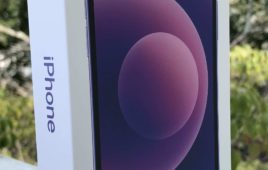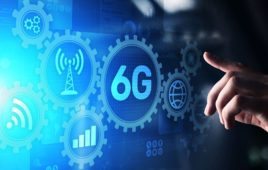ADELPHI, Md. (AP) — Claiming progress in his goal to put the world at the fingertips of every American student, President Barack Obama on Tuesday announced $750 million in commitments from U.S. companies to begin wiring more classrooms with high-speed Internet.
Apple is pledging $100 million in iPads, computers and other tools. AT&T and Sprint are contributing free Internet service through their wireless networks. Verizon is pitching in up to $100 million in cash and in-kind contributions. And Microsoft is making its Windows software available at discounted prices and offering 12 million free copies of Microsoft Office software.
“In a country where we expect free Wi-Fi with our coffee, we should definitely demand it in our schools,” Obama said at a middle school in the Washington suburb of Adelphi, Md. Students there are assigned iPads that they use in class and at home.
Beyond the promise of millions in donated hardware and software, the Federal Communications Commission also is setting aside $2 billion from service fees to connect 15,000 schools and 20 million students to high-speed Internet over two years.
Obama last year announced his goal of bringing high-speed Internet to 99 percent of students within five years. He used Tuesday’s announcement as another example of how to act without waiting on Congress.
“We picked up the phone and we started asking some outstanding business leaders to help bring our schools and libraries into the 21st century,” the president said.
The average school has the same Internet speed as an average home, but serves 200 times as many people, Obama said. About 30 percent of students have true high-speed Internet in their classrooms, compared with 100 percent of South Korean students, he said.
He said the pledges would put the world and outer space at every child’s fingertips
Before the speech, Obama visited a seventh-grade classroom and noted one benefit of their Internet access: lighter knapsacks because they don’t carry as many books to and from school.
“Sasha’s book bag gets too big sometimes, hurts her back,” he said of his younger daughter.
Cecilia Munoz, director of domestic policy for Obama, spoke of the importance of providing high-quality education for all students.
“Technology is clearly going to be essential to making that possible,” she said.
The initiative builds on Obama’s focus for 2014 on helping more people join and stay in the middle class amid an economic recovery in which the benefits have come more quickly for those at the top of the income scale than for those toward the bottom.
Gene Sperling, a top White House economist, said every student needs high-speed Internet, but the problem is more pronounced in disadvantaged schools where students are less likely to have Internet connections at home. He said digital learning tools make it easier for schools to cater to the needs of students who need extra help or who are ahead of the curve.
He estimated that millions of students would benefit from Tuesday’s announced help.
For Obama, the commitments from the technology companies may help bolster his argument that despite opposition to much of his agenda from Congress, he can still be effective in his final years in office.
Obama has held similar events in recent days to announce commitments by entities outside of government to address long-term unemployment and expand access to higher education for low-income students.
“This for us really isn’t about what Congress will or won’t do,” Rose Kirk, president of the Verizon Foundation, said in an interview. “It’s really about the kids. I believe it makes perfect sense that we use our technology, our resources, our insight to have an impact.”




